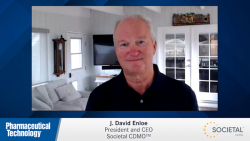
OR WAIT null SECS
- About Us
- Advertise
- Contact Us
- Editorial Info
- Editorial Advisory Board
- Do Not Sell My Personal Information
- Privacy Policy
- Terms and Conditions
© 2025 MJH Life Sciences™ , Pharmaceutical Technology - Pharma News and Development Insights. All rights reserved.
Rare Disease Day: Progress and Potential
The US Orphan Drug Act of 1983 defines a rare disease as one that affects fewer than 200,000.
The US Orphan Drug Act of 1983 defines a rare disease as one that affects fewer than 200,000. There are nearly 7000 rare diseases affecting nearly 30 million-or nearly one in 10-Americans, according to the National Organization for Rare Disorders (NORD).
The National Institutes of Health (NIH) reports that approximately 80% of rare diseases are genetic in origin; about half affect children. The challenges of facing a chronic, disabling, severe, or even life-threatening disease is compounded by difficulties in receiving an accurate diagnosis, and the lack of therapies to address the condition.
For the past six years, the last day in February has been designated Rare Disease Day. First observed in Europe in 2008 by the European Rare Disease Organization, the initiative expanded to the US in 2009. In 2012, more than 60 countries participated.
This year, events will be held worldwide on Feb. 28 to bring the cause of rare diseases to the attention of patients, the public, the medical profession, and policy makers. For example, the NIH is sponsoring a two-day conference for researchers and policymakers, including FDA representatives, to raise awareness of rare diseases, bring stakeholders closer together, coordinate policy actions between nations, and emphasize rare disease research and the search for new therapeutics.
The Orphan Drug Act provides tax credits and marketing incentives for sponsors to develop products for rare diseases. Since 1983, the number of applications submitted and products designated as orphan drugs has continued to grow. More than 400 drugs and biologic products for rare diseases have been approved. In contrast, fewer than 10 such products supported by industry came to market between 1973 and 1983.
Drug makers have financial incentives to develop orphan drugs. A 2012 report from Thomson Reuters, The Economic Power of Orphan Drugs, estimated the orphan-drug market at the end of 2011 at $50 billion globally, or 6% of total pharmaceutical sales. However, a compound annual growth rate (CAGR) of 25.8% for 2001 to 2010, compared to a 20.1% CAGR for a matched group of non-orphan control drugs, and an increasing number of orphan-drug approvals, suggests that the growth rate of orphan drugs will exceed that of non-orphan control drugs over the next 30 years, according to the report. Because many orphan drugs are biologics, they are less susceptible to generic competition than small-molecule drugs.
The impact of the smaller population needing the orphan drug is offset by the high cost of the drugs. In fact, the Thomson Reuters study found that 29% of orphan drugs have annual sales greater than $1 billion, about the same percentage as non-orphan drugs.
While the Orphan Drug Act has spurred the development of life-saving and life-improving therapies for individuals with rare diseases, it also has provided financial incentives for drug companies to invest in these narrow specialties. However, as the sponsors of Rare Disease Day point out, there is still much work to be done.


